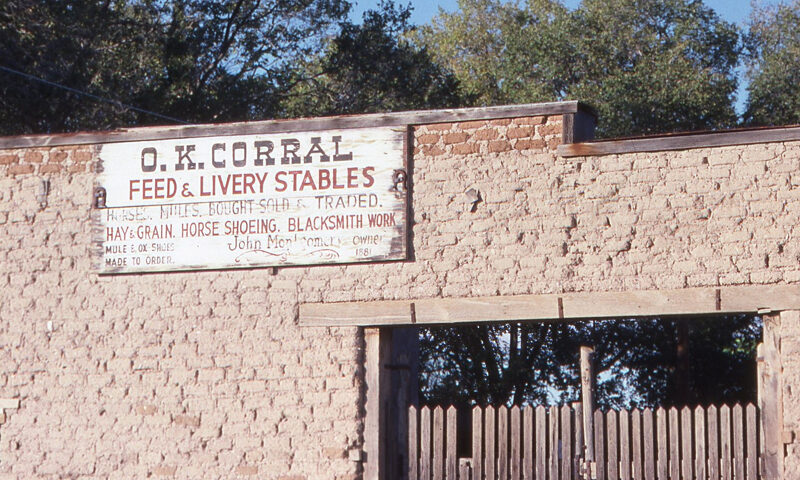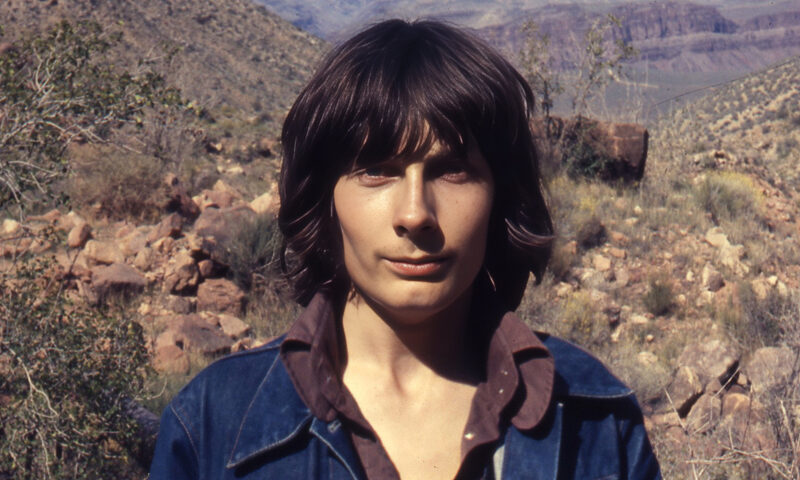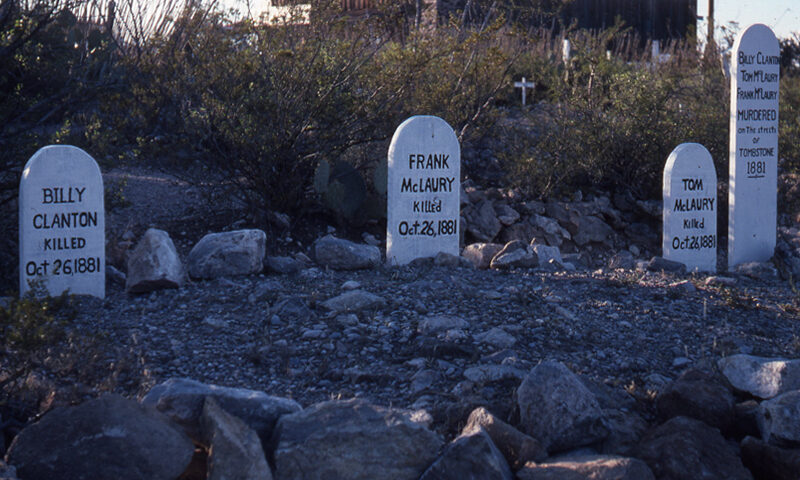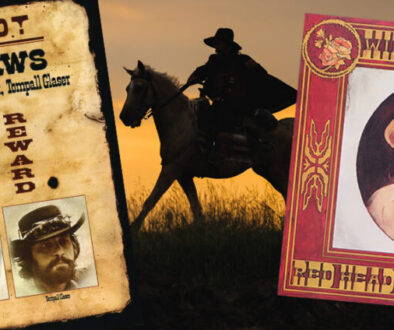
TOMBSTONE—THE TOWN TOO TOUGH TO DIE!
In the fall of 1976, the Bicentennial year, I vividly remember stepping off a Greyhound bus in Tombstone, Arizona. It was October 26, although after months of traveling the highways and backroads, from the East Coast to the West, that fact at first glance carried little significance. Wanted! The Outlaws had been released earlier that year, and its songs were still populating the airwaves. It felt like there was no better time for a young guy to be on the road.
Tombstone was a different place back then, tourists were few and the historic O.K. Corral lay almost forgotten.
Tombstone, Arizona, is without doubt one of the most legendary towns of the American Old West. Founded in 1879, it quickly grew from a small mining camp to a bustling boomtown, thanks to the discovery of rich silver deposits. At its peak, the town boasted a population of around 15,000, along with numerous saloons, gambling halls, and theaters. However, it was not just the wealth of silver that cemented Tombstone’s place in history—it was also the violence and lawlessness that led to one of the most infamous gunfights in American history: the Gunfight at the O.K. Corral.
THE BOOM & BUST OF TOMBSTONE
Ed Schieffelin, a prospector, first discovered silver in the area in 1877, despite warnings that all he would find in the desert was his own tombstone—thus inspiring the town’s name. The mining boom brought prosperity, but it also attracted criminals, outlaws, and rival factions, leading to frequent conflicts between lawmen and cowboys.
Tombstone thrived with its numerous businesses, including the Bird Cage Theatre, famous for its rough and rowdy atmosphere, and the luxurious Grand Hotel. However, as mining operations expanded, water seepage into the mines became a major problem. By the late 1880s, coupled with falling silver prices, the once-thriving town saw a steep decline in population and prosperity.
THE GUNFIGHT AT THE O.K. CORRAL
The most famous event in Tombstone’s history occurred on October 26, 1881. Tensions had been rising between the Earp brothers—Virgil, Wyatt, and Morgan—along with their ally Doc Holliday, and the Clanton-McLaury faction, a group of cowboys often suspected of cattle rustling and criminal activities. The rivalry culminated in a deadly confrontation in a vacant lot behind the O.K. Corral.
The gunfight lasted only about 30 seconds but left three cowboys—Tom McLaury, Frank McLaury, and Billy Clanton—dead. Virgil and Morgan Earp were wounded, while Doc Holliday and Wyatt Earp emerged mostly unscathed. The event cemented the Earps and Doc Holliday as legendary figures of the Old West. However, the legal aftermath saw Wyatt Earp embark on a vendetta ride, exacting revenge on those responsible for attacking his family in the months that followed.
THE TOWN TOO TOUGH TO DIE
Despite economic decline, Tombstone refused to fade into obscurity. Its resilience earned it the slogan “The Town Too Tough to Die.” While many boomtowns became ghost towns, Tombstone reinvented itself as a historical attraction. Today, it remains a vibrant tourist destination, with reenactments of the O.K. Corral gunfight, well-preserved historical buildings like the Crystal Palace Saloon, and the hauntingly famous Boothill Graveyard.
TOMBSTONE TODAY
Modern-day Tombstone embraces its Wild West past, drawing visitors eager to step back in time. The town’s museums, historic sites, and annual events, such as Helldorado Days, celebrate the rugged spirit of the frontier. Though silver no longer fuels its economy, the legends of outlaws, lawmen, and gunfights continue to captivate history enthusiasts from around the world.
Tombstone’s legacy as “The Town Too Tough to Die” endures, proving that even as fortunes rise and fall, some stories remain immortal.
- THE O.K. CORRAL, 1976
- THE JOINT EDITOR IN ARIZONA, 1976
- THE O.K. CORRAL, 1976
- BOOTHILL GRAVEYARD, 1976





